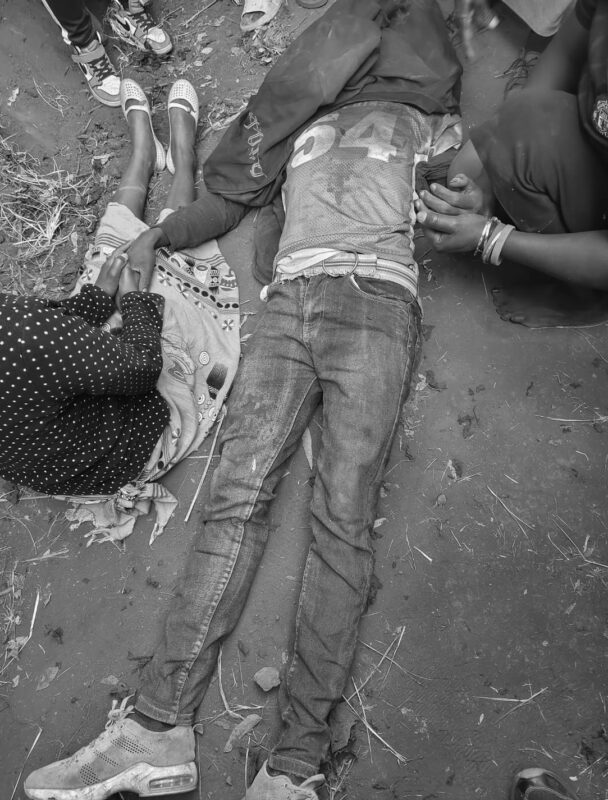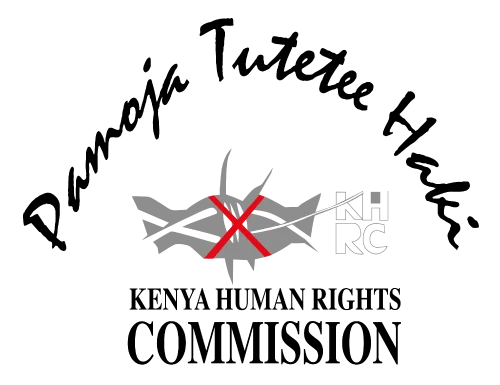Kakuzi impunity and state inaction on historical land injustice claims must end: A response to the decision by NLC
Background
The National Land Commission (NLC), through its determination published in The Kenya Gazette dated 14th November 2025, has recommended the surrender of 3,200 acres of land by Kakuzi to a section of claimants who presented historical land injustice (HLI) claims before the Commission. Other recommendations by the NLC include;
- Commencement of a vetting process by the Ministry of Lands to settle the vulnerable members accordingly,
- regularizing of settlement schemes within Kakuzi land by addressing the issue of pending titles and concluding the settlement in Phase V and any other of the settlement schemes within Kakuzi land,
- documenting and regularizing public utilities to the relevant Institutions and departments,
- relocation of contested schools and public utilities by Kakuzi to allow access closer to the people and in the alternative, provide proper access roads,
- regularizing and/or documenting all surrendered land to the County Government of Murang’a public utilities to the relevant institutions and departments and,
- in consultation with the County Government of Murang’a, surrender by Kakuzi of at least 50 acres of land in an appropriate location solely for public purpose, for the development of urban centers and for any other public utilities and amenities in exchange of the 5 acres which had been identified.
The affected communities, the Kenya Human Rights Commission (KHRC) and the Ndula Resource Centre, that have been at the heart of the struggle for land justice for the Kakuzi-impacted communities for more than 20 years now, welcome, albeit begrudgingly, the decision by the NLC to resolve some of the historical land injustices. However, we note with great concern that numerous issues remain unresolved and that the NLC squandered the single-most opportunity available to resolve land justice impasse spanning over decades. The mandate of the NCL to resolve HLIs is entrenched in the Constitution of Kenya under Chapter 15, the National Land Policy and the National Land Commission Act. The NLC is one of the constitutional commissions given special powers to investigate violations under its mandate and together with other constitutional commissions, under article 249 (2), is independent and not subject to directions or control by any person or authority.
We note that contrary to the above obligations and expectations, the NLC dismissed most of the claims across the board and we shall be undertaking a detailed analysis of the full decision to determine the next actions. Our interpretation of historical land injustices as defined in the National Land Policy and the National Land Commission Act is that they are grounded on the legitimacy of claims, legality of titles notwithstanding and most of the communities were able to prove this.
The KHRC and NRC have worked with the affected communities, provided legal and advocacy support in pursuit of justice for egregious human rights violations perpetrated by Kakuzi. The land that Kakuzi sits on today was acquired through decades of invasion and colonisation of Kenyan territory by European powers culminating to years of systemic, forceful displacement of local communities. It is these communities that have now become victims of rape, killings and gross assault by Kakuzi security guards. Read more here.
While the NLC determination represents recognition of a hard-won, though delayed, victory for victims of historical land injustices, it remains only a partial step toward full restorative justice.
Unresolved issues
The NLC decision, although progressive on the face of it, contains significant gaps outlined below and that must be urgently addressed:
- NLC failed to address issues such as expired Kakuzi leases, reversion of titles, and the protection of public roads and easements, which remain central to justice for the affected communities.
- Equally concerning is the NLC’s failure to acknowledge over a century of pain, including violent evictions in 1989 and 1999 and the link between historical land injustices and systemic human rights violations (rape, killings, assault etc) such as those reported against Kakuzi and other multinational corporations. Justice demands recognition of this suffering.
- The blanket dismissal of nine claims based on Kakuzi’s preliminary objection on January 30, 2024, is a huge disregard of the history of violations suffered by the communities.
Demands:
- Implementation of the NLC determination must be victim-centric. We find it appalling that some of the decisions have been left for Kakuzi PLC to steer when it is in fact Kakuzi that is implicated for displacing communities and superintending over a culture of fear, intimidation and gross human rights violations. It was the victims who painstakingly traced histories and recounted painful memories, mobilised evidence, participated in hearings, and prosecuted cases without support from national or county governments. Both levels of government have historically collaborated with Kakuzi to intimidate, arrest, criminalise, and silence claimants. They cannot now oversee implementation.
- There must be establishment of a Technical Working Group to oversee the surrender of public facilities. The impacted communities, the KHRC and NRC should be involved in this.
- The 3,200 acres must be shared equitably among the three primary claimant groups. Each group’s specific prayers must be honoured: the Kituamba–Kaloleni claimants must be restored to their intact ancestral land, while the Milimani internally displaced persons (IDPs) must be resettled on their ancestral land near Kinyangi, Kitito, and Rubiru, as clearly outlined in the supporting documents submitted to the NLC, Kakuzi PLC, and the Attorney-General in September 2024.
- The NLC recommendations should be specific and clearly assigned to the distinct claims. The community rejects the NLC’s collapsing of four independent claims into a single award. We find it escapist, unjustifiable, and contrary to the specific remedies sought by the communities. The Kituamba–Kaloleni claimants, for instance, sought restoration and compensation and not a general settlement, while the Milimani IDPs sought a return to their ancestral land, not vague relocation. A blanket remedy does not adequately resolve the issues and cannot replace these legally and historically grounded claims. Bundling the claims together is also likely to fuel acrimony amongst claimants during implementation of the NLC determination.
- Communities demand restoration to land in areas where public utilities such as schools, market centers, health centres have existed since 1932. These areas include Misuuni, Garage, Shamba M, Matungulu, Jericho, Kasioni, Kwa Vunza, and Rubiru. Uprooting public facilities to bring them ‘closer to the people’ will inevitably cause untold disruption to communities that have borne the brunt of corporate impunity for too long. It is the people who must be returned, not the facilities. This recommendation by the NLC differs sharply from its 2019 decision where Kakuzi was directed to surrender all public utilities including schools, health centres and markets to the County Government. Additionally, claimants do not require access roads built by Kakuzi. They seek restoration to areas served by public roads funded by taxpayers over decades.
- The communities did not pray for the regularisation of the ‘settlement schemes’ inside Kakuzi land. Instead, we insist that Milimani area remains condemned by various government reports such as Amos Kimunya Report of 2004, Thika District Settlement Office of 2007, NEMA Multi Sectoral Report of 2013 and Murang’a County Assembly Special Investigative Draft Report of 2020/2021 among others. Claimants under Claim 580 have been clear that they seek return to their ancestral land, not titles in harsh, unarable, inaccessible areas. If the government and Kakuzi wish to regularise settlements, they may do so for non-claimants, but our communities will not be forced into wastelands.
- We welcome the decision supporting the titling of Ithanga Phase V and call upon the fast-tracking of the implementation of this progressive decision.
- The Ministry of Lands should provide funds for the excision, titling, surveying processes and to support other related administrative costs.
- We call for full disclosure and the implementation of all the terms of the London Settlement entered between Camellia PLC and Leigh Day in February 2021 as we are aware that many of the commitments have not been implemented. KHRC and NRC were involved in part of the processes leading to the settlement.
- Lastly, the government of Kenya must live up to its duty to protect by providing policy intervention to safeguard land rights for Kenyans as provided in article 60 of the Constitution of Kenya, with regard to equitable access to land, security of land rights among others. The government in the National Land |Policy has obligations to implement the following interventions on historical land injustices; land banking, land redistribution, resettlement and restitution.
Conclusion
Kakuzi’s hostility against its host-communities, characterised by its vow to “use all legal means to protect shareholder rights,” exposes a corporate culture sustained by violence and impunity and one that prioritises profit over human dignity. Not surprising, Kakuzi does not mention the affected communities and the need to resolve the outstanding historical land injustices, clearly exposing a company that has failed to learn from its past mistakes. Instead, Kakuzi focused on preserving the rights, interests of the shareholders and the potential negative impact on its operations and earnings at the expense of community rights.
The KHRC and NRC are currently reviewing the full decision of the NLC to understand the circumstances that led to the dismissal of the nine claims and other submissions presented to the Commission by claimants from other parts of the country. We shall exhaust all the political and legal means available to challenge the wanton, runaway and unacceptable blanket dismissal of the nine claims in favour of Kakuzi.
Further, we shall pursue the issue of compensation for material loss suffered by Kituamba-Kaloleni IDPs during the December 1989 violent and destructive evictions and the 1999 burning of houses and other property in Gaichanjiru village in Milimani by Kakuzi PLC.
In conclusion and recognising that this struggle has been an intergenerational fight that has taken close to six decades marked by gains and pitfalls, we shall not retreat or surrender. We remain unbowed.
Two killed in four days as violence escalates at Del Monte plantation
On August 11, we reported that a G4S Kenya guard contracted by Del Monte Kenya fatally knocked down 31-year-old vegetable vendor Michael Muiruri in Gatwekera, Murang’a, on August 8.
On August 12, as residents protested his killing, police, backed by G4S guards, opened fire and fatally shot 30-year-old Stephen Marubu in the chest. The killing occurred at Del Monte’s Pineapple Field No. 19, adjacent to Kakuzi Road.
The Kenya Human Rights Commission and Ndula Resource Center are deeply concerned about the growing militarization of Kenya’s agribusiness sector, particularly around the Del Monte plantation, where violent incidents continue to claim lives and cause injuries.
Marubu’s death at the hands of police comes just days after the government announced the Presidential Proclamation on the Framework for Compensation of Victims of Protests and Riots, aimed at compensating civilians and police officers affected by protests between 2017 and 2025.
This latest killing shows the persistence of police brutality and exposes the William Ruto regime’s lack of genuine commitment and good faith to ending such senseless violence.

Del Monte, G4S tied to latest killing in Murang’a
A G4S Kenya guard contracted by Del Monte Kenya is at the center of a fatal incident that has reignited concerns over corporate-linked violence in the country’s agribusiness sector.
Between 8 am and 9 am on August 8, 2025, the guard knocked down 31-year-old Michael Muiruri in Gatwekera, Murang’a, suspecting him of stealing pineapples. Muiruri, however, was no thief but a local vegetable vendor on his way home from Thika’s Makongeni market, where he had sold his produce earlier that morning.
Muiruri was riding pillion on a motorcycle driven by his friend, 24-year-old Brian Kuria, who survived the attack. Kuria rushed Muiruri to a local clinic, where he received first aid.
Muiruri, clutching his torso and gasping for breath, was referred to Thika Level 5 Hospital. By the time his family arrived, doctors found his vital signs unresponsive. At about 1 pm, they were told their firstborn son, and the family’s sole breadwinner, had succumbed.
A postmortem conducted on August 11, 2025, confirmed the cause of death as multiple injuries resulting from a motor vehicle accident.
The G4S guard was driving a Toyota Hilux, registration KBZ 441E. When Muiruri’s family and Kuria went to Ngati Police Station to report the killing, they encountered the guard again, this time in pursuit of them, nearly knocking them down before they reached the station.
Police impounded the vehicle and Kuria’s motorcycle, which bore visible damage to the rear. The Hilux had a broken fog light and a damaged bull bar, consistent with impact. The incident was recorded under OB number 12/08/08/2025.

This killing fits a disturbing pattern of lethal force and intimidation by security personnel guarding multinational plantations in Kenya.
In December 2023, the bodies of four men were found near Del Monte’s Thika plantation. Witnesses said they were beaten by company guards, thrown into the Chania River, and left to die, accused, without evidence, of stealing pineapples.
A Human Rights Impact Assessment conducted by Partner Africa, and shared with British supermarkets, became public in January 2024 and documented killings, assaults, and intimidation against suspected trespassers and innocent locals at the Thika plantation.
In March 2024, Del Monte announced it had terminated 214 in-house guards and outsourced security operations to G4S. Yet, community members tell the Kenya Human Rights Commission and the Ndula Resource Center that the violence has continued unabated.
G4S itself has a chequered record. In Kwale, KHRC documented cases of torture and rape perpetuated by G4S guards and a special police unit working for Bamburi Portland Cement Ltd, in a long-running land dispute.
KHRC and Ndula Resource Center demand:
- Immediate arrest and prosecution of the G4S guard, with full public disclosure of investigation findings.
- Full compensation for Muiruri’s family, alongside reparations for affected communities.
- Legal accountability for Del Monte and G4S, with strict licensing conditions or suspension for violations.
- Suspension of Del Monte’s SA8000 social accountability certification and ISO9002 certification on quality management systems, and contracts with international buyers until the company meets human rights standards and obligations.
- Reopening and fast-tracking of unresolved cases linked to deaths, torture, and sexual violence involving Del Monte’s security, including the December 2023 killings.
